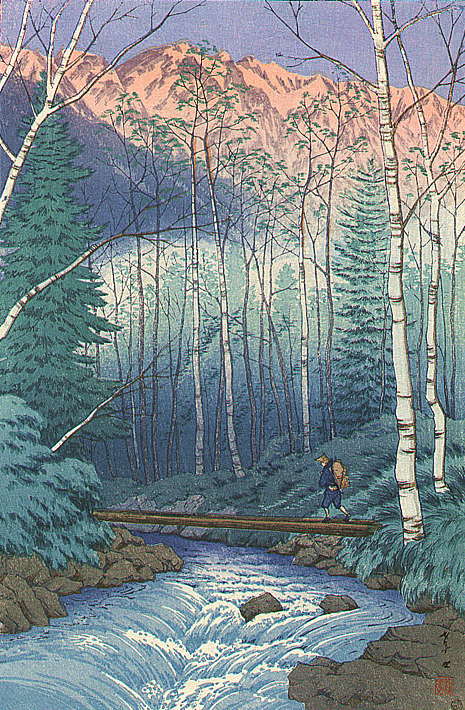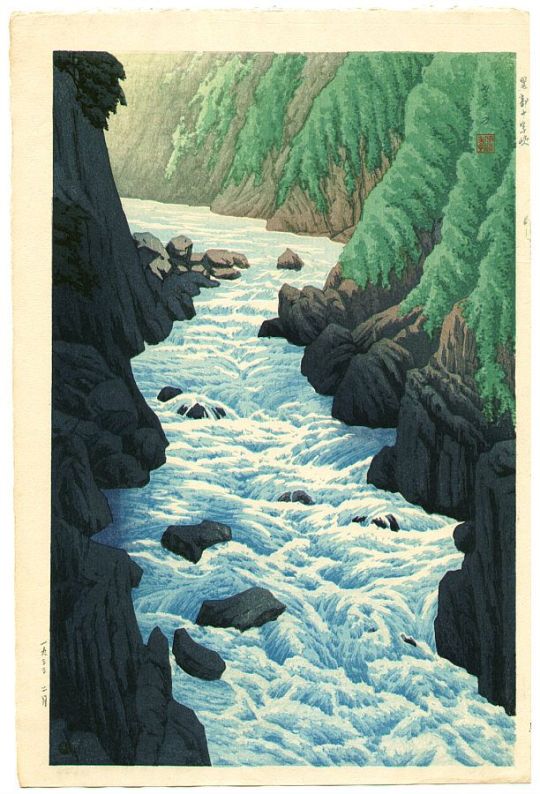#Henmi Takashi
Photo
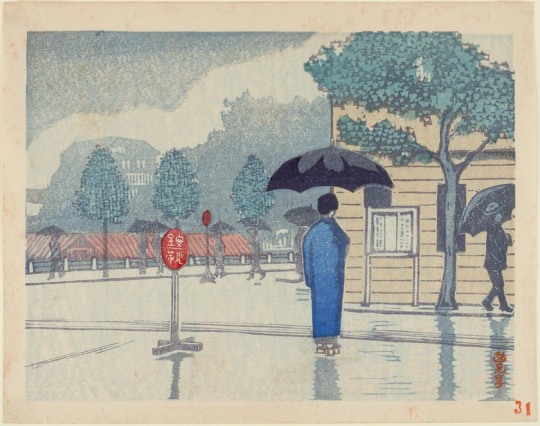
Henmi Takashi
Rain in Yotsuya-Mistuke, 1930
Nakajima Jûtarô of Sôsaku-Hanga Club
woodblock print on paper
402 notes
·
View notes
Text
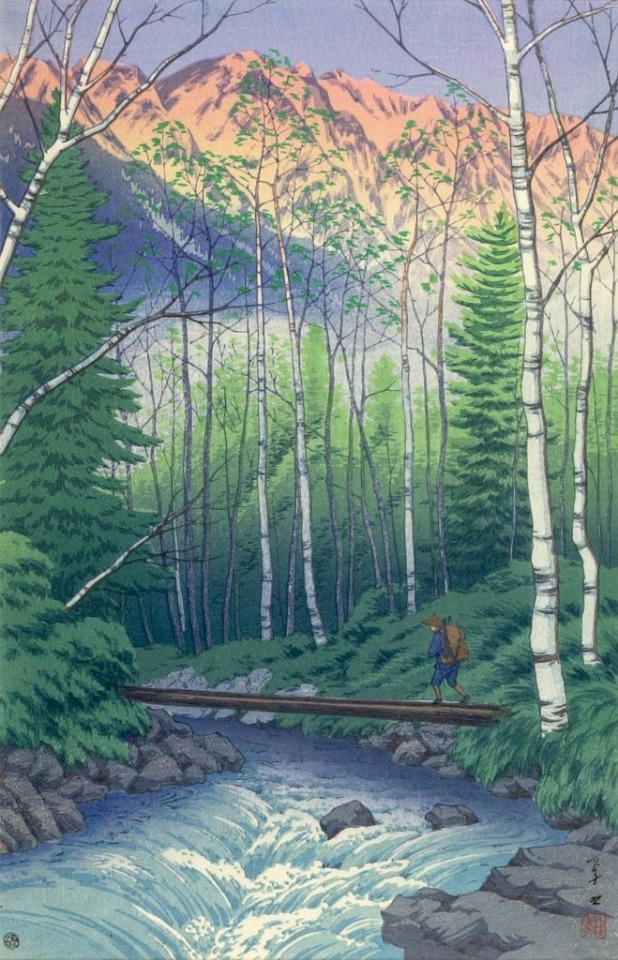
Henmi Takashi
Takagawa River at Dawn
1932
#Henmi Takashi#river view#landscape#japanese prints#japanese artist#japanese art#asian art#japanese aesthetic#aesthetic#beauty#art history#aesthetictumblr#tumblraesthetic#tumblrpic#tumblrpictures#tumblr art#tumblrstyle#artists on tumblr#asian aesthetic#tumblrposts
23 notes
·
View notes
Text
Rei Asaka died so the other fruity anime/manga girls could step on her corpse run
#we cant be really mad at ikeda for this sole reason#i am almost done with this stupid manga they live in my brain now#the last piece is all about henmi and takashi so i will read and then pretend it wasnt there#oniisama e#rei asaka
27 notes
·
View notes
Text
i only have so many do you think he and his friend have explored eachothers bodies’s for grown men hitting on highschool girls in old shoujos left in me.
#txt#@henmi and takashi please fuck nasty in takashis car take him to germany and leave kaoru and mariko alone for the love of christ
6 notes
·
View notes
Photo
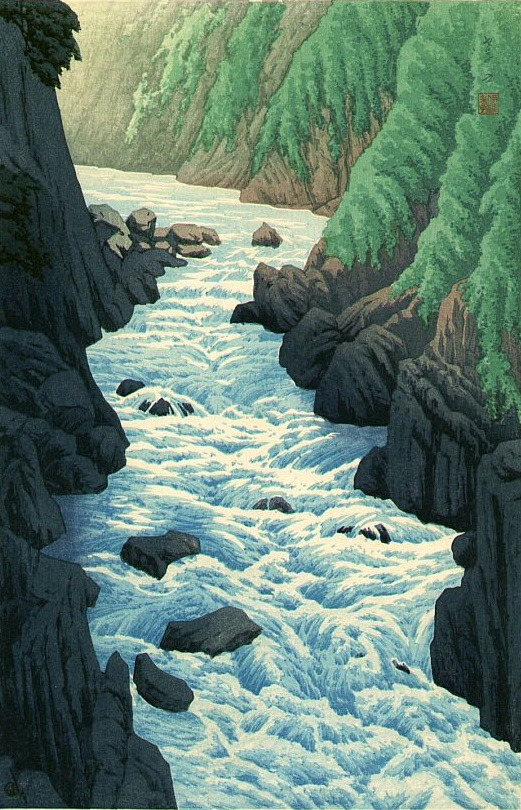
"Juji-gorge, Kurobe" 1930s
by Henmi Takashi, Japan
1K notes
·
View notes
Text
but i am grateful there was no shoehorning of mariko + takashi. i was on the edge of my seat until the very end waiting for it and it was the biggest sigh of relief when it didnt come cause now i get to interpret their previous interactions and him genuinely being worried for this young girl in crisis and wanting to support her as opposed to another college student going after a 15 yr old (henmi go to JAIL challenge)
#i dont have a bad opinion of takashi honestly now that i know mariko is not doing all that. thank god.#and her last appearance was sobbing into kaoru's arms
7 notes
·
View notes
Text
Finished Oniisama E
I liked it a lot for most of it, I was disappointed by the eventual brother reveal tbh
I was expecting a little more of a satisfying payoff with that, having the episodes revolve around Takehiko and Kaoru (which I hate but that probably goes without saying) felt kind of useless
I did enjoy seeing Fukiko reflecting on Rei, even though they never came out and told each other they had the same parents
I guess it makes sense given other events, but the subs being like 'I met a man' when the pronouns were gender neutral for that last scene... 🙃
Well, that's old anime
I enjoyed the relationship between Rei and Nanako, the friendships and Tomoko, Mariko, and Nanako. The genuine say Mariko was able to become friends with them was very sweet because other than the 'scary obsessive clingy' reaction she first had to Nanako, I was expecting a turn into something catty and insincere. I'm glad the anime mostly maintained she didn't go w Takashi bc like. Multiple adults hanging around highschoolers, even w the series written in the 70s, would have been aggravating. Next time let's throw Henmi to the train 🤷
I also thought her finding some enjoyment from her dad's early book was sweet, even though I hated the dads. I liked her mom and enjoyed seeing Tomoko and Nanako's friendship towards her, i was hoping Nanako would come to care for her even early on when she was trying to pull her away from Tomoko and threatening her.. and the way that things resolved with Misaki and the student body came to reject the sorority was something I enjoyed.
The elegance and beauty tinged with the desperation behind much of the earlier show was really enjoyable, I liked the cruelty Fukiko displayed and how Nanako and Kaoru came to care for Rei while she was so obsessed and hurt by her. The introduction of horror was good.
I was initially disappointed that Fukiko's actions towards Nanako were spurred by her infatuation with Henmi, but after she tried to kill Rei as a child it made sense and showed she already had that capability for violence even without some guy reading her Shakespeare. She was so possessive of the people she cared about I would have liked to see how she'd have reacted to Rei genuinely trying to start getting closer to Nanako, but the death isn't something I'd change. The way Kaoru's story/the show ended was dissatisfying for several reasons, but overall I really liked the show.
Ultimately I enjoyed the girls in the show and their relationships and the older brothers I could have done without having a physical presence
9 notes
·
View notes
Text
everytime I see henmi and takashi show up on the screen I wonder why these 20 somethings med students don’t date each other instead of pursuing high schoolers
23 notes
·
View notes
Photo

Artist: Henmi Takashi Title: Ferry at Odai Date:1922.
242 notes
·
View notes
Photo

Henmi Takashi
Ushigome Mitsuke
:c. 1929-1932
224 notes
·
View notes
Text
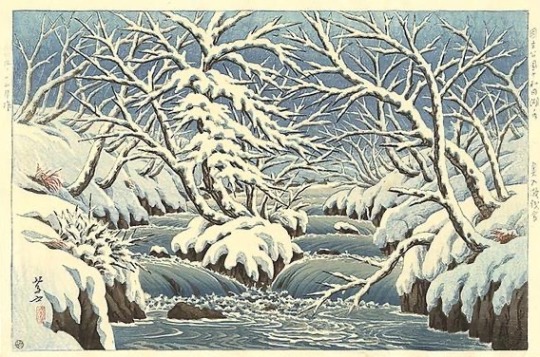
Henmi Takashi
Rapids in Kunitachi Park in Towada in snow (Oirase)
#Henmi Takashi#japanese prints#woodcut#woodblock print#japanese artist#japanese art#japanese aesthetic#aesthetic#landscape aesthetic#beauty#art history#aesthetictumblr#tumblraesthetic#tumblrpic#tumblrpictures#tumblr art#tumblrstyle#artists on tumblr
16 notes
·
View notes
Photo
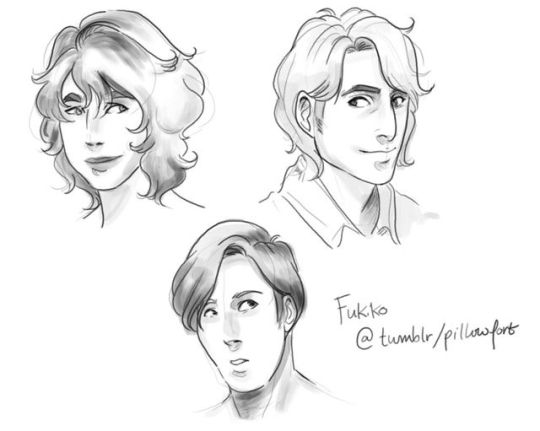
Rainy day doodles.
#oniisama e#kaoru orihara#takehiko henmi#takashi ichinomiya#my art#takashi became ikuhara which makes so much sense#a weirdo who really loves lesbians
20 notes
·
View notes
Text
Comentarios sobre el último video de Rayo Confuso de Oniisama E
El sábado pasado los de Rayo Confuso sacaron su último video resumen de Oniisama E y tengo algunos comentarios al respecto. Por motivos personales, prefiero ponerlos aquí y no en el video. El resumen me pareció muy bueno y aprecio el trabajo que hacen para dar a conocer esta clase de animes, mis comentarios más bien tienen que ver con un par de aclaraciones que tengo ganas de hacer y algunas reflexiones sobre el anime en sí.
(Antes de comenzar no está de más avisar que hablaré de grandes spoilers de la serie)
1.- El caso de Rei: Sin lugar a dudas la muerte de Rei en el anime es una de las escenas más frustrantes que hay porque va contra las expectativas del público. En el video lo toman como si hubiera sido un suicidio y eso suena hasta lógico porque una gran parte de la historia de Rei tenía que ver precisamente con su obsesión con la muerte. Sin embargo, no creo que esa haya sido la intención del anime ya que utilizaron todo un capítulo para recalcar que lo que sucedió no fue un suicidio, sino un accidente. A diferencia de en el manga donde Rei se suicida después de que Fukiko le dice que siempre la despreció, aquí no hay nada que la haga tomar esa decisión, por el contrario, en los capítulos que preceden a la muerte de Rei se muestra cómo va mejorando su estado de animo. En el video se interpreta que Rei quizo hacer las cosas bien antes de morir y por eso le envió las flores a Fukiko, creo que más bien esa escena lo que quería demostrar era que Rei por fin se había despegado de Fukiko y las rosas eran una manera de finalizar con esa relación en buenos términos, por eso las pide antes de irse a la cita con Nanako. Pienso que si hubiera tenido intenciones de tirarse del puente, no hubiera hecho una cita con Nanako, ni tampoco se habría molestado en comprar el ramo que llevaba para la chica, digo, sería un gasto inútil de recursos. Entiendo que se le trate de dar otra interpretación a la escena porque todo lo relacionado con el accidente no tiene mucho sentido. ¿Cómo fue que se le voló el ramo? ¿Por qué se le ocurrió saltar? ¿Cómo que tuvo tan mala suerte que al brincar justo justo justo iba pasando el tren? Y si los del anime hubieran querido que fuera suicidio, ¿por qué no lo hicieron como en el manga o escogieron otra forma más explícita? Con tantas cosas turbias que pasaron en la serie suena raro que no los hubieran dejado poner ese suicidio.
Me parece que los escritores del anime se quedaron como el perro de las dos tortas. Por un lado querían que Rei se liberara de su relación tóxica con Fukiko y empezara una relación con Nanako, pero por el otro, no se atrevieron a cambiar por completo el final de la historia así que terminaron matando a Rei de una manera bastante absurda. Opino que debieron de haberse decidido sólo por una de las dos opciones porque al tratar de hacer las dos cosas al mismo tiempo afectaron la calidad de la historia.
2.- Sobre Kaoru: En el video se menciona que Kaoru tiene un problema del corazón cuando en realidad lo que sucede es que sufrió cancer de mama y teme que no sobrevivirá cuando surja la metástasis. No sé si esto fue porque así lo plantearon en el doblaje español, si esto fue así, se me hace chistoso que hayan dejado todo el asunto del bullying, el incesto, las drogas y el suicidio pero que no se atrevieran a hablar de cancer de mama. (“¡Pechos no! ¿Alguien quiere pensar en los niños?”). Otra cosa es que mencionan que uno de los conflictos en el manga consiste en que Kaoru pensaba que Takehiko se iría a Alemania con otra mujer. Este malentendido sí ocurre, pero nada más dura como dos páginas porque el manga va rápido. El detalle a comentar aquí es que en el manga, Henmi primero le dice a todo el mundo que Kaoru será su esposa y se la llevará a Alemania, pero Kaoru es la última en saberlo, por eso cuando Nanako le dice que su hermano se irá con “su esposa”, ella malinterpreta la situación y cree que hay otra mujer. Naturalmente, la chica se enoja que hayan tomado esas decisiones sin consultarla, pero de nuevo el conflicto se soluciona pronto porque en fin y al cabo ella siempre quiso estar con Takehiko. Al menos en el anime queda mejor que Kaoru sea la que elija irse a Alemania al final.
Respecto a las diferencias con el final, narrativamente hablando tiene sentido que Kaoru muera en el manga puesto que para ella Rei representaba la vida, así que al morir Rei, Kaoru tampoco podía seguir viviendo. También está el hecho de que Rei y Kaoru eran un elemento transgresor en el mundo de Oniisama e, por lo que al morir, se “recupera el equilibrio” de alguna forma (es una táctica muy común en las historias viejas donde aparecían esta clase de personajes). En el anime no la mataron, pero al final la convirtieron en un arquetipo de lo femenino, eliminando así la transgresión.
3.- ¿Por qué no incluyeron la relación de Mariko y Takashi en el anime? Hmm supongo que porque él tiene 23 y ella tiene 16 y como que a los escritores no les gustó tanto la idea. Y creo que hicieron bien en dejarlo así. Hubiera sido mejor preguntarse por qué Mariko y Takashi están juntos en el manga. Como que en el shoujo de esa época era muy normal que las protagonistas tuvieran una relación con un hombre mayor. Esto lo he visto mucho en shoujos de los 70’s y 80’s como “Candy Candy”, “Glass Mask” y “Sukeban Deka”, incluso un año después de que salió el anime hubo un manga shoujo donde una chica de 16 años tiene una relación con su maestro de 23. Supongo que es una manera de explotar esa atracción que muchas preadolescentes y adolescentes sienten hacia personas mayores. Desde luego esa clase de historias ya no quedan bien por razones obvias.
De momento esos son los detalles que deseaba comentar. Me da curiosidad saber qué otras series van a resumir ya que es muy interesante el trabajo que hacen. En fin, lo recomiendo mucho.
8 notes
·
View notes
Photo

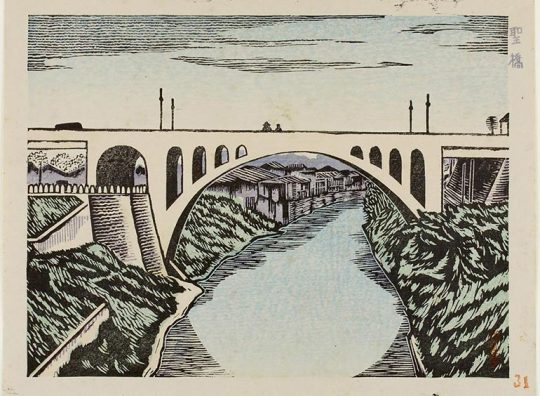
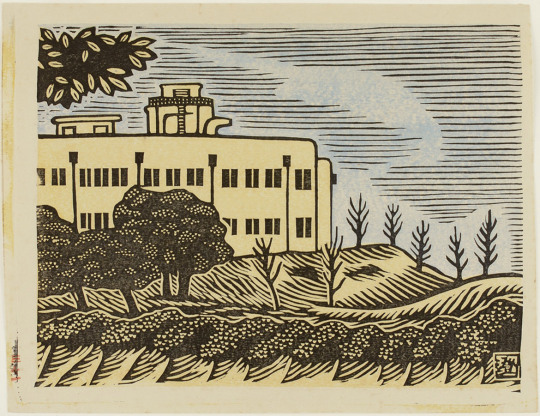
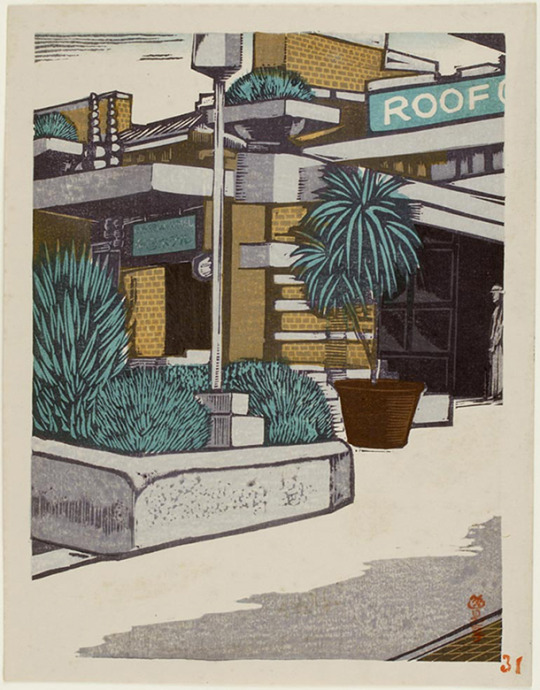
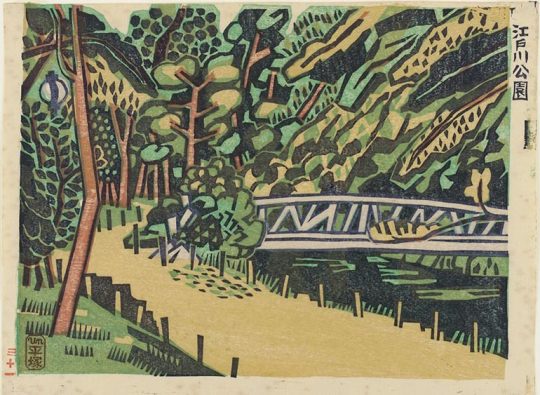

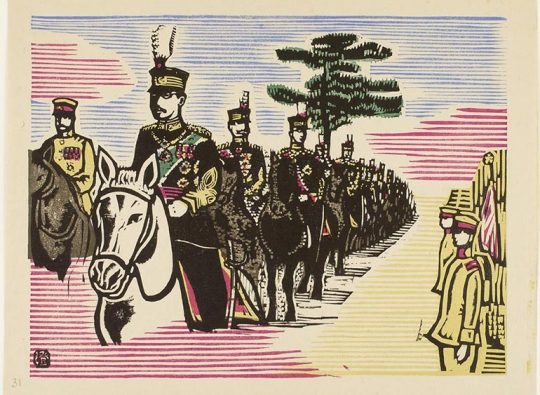
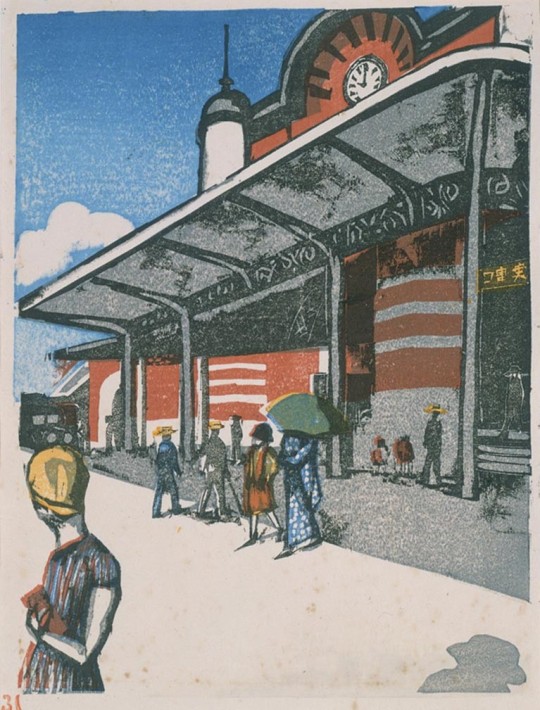
In 1928, a group of eight Japanese artists got together to produce a series of prints, called Shin Tokyo Hyakkei, or One Hundred Views of New Tokyo. The artists – Hiratsuka Un-ichi, Onchi Koshiro, Fukazawa Sakuichi, Kawakami Sumio, Maekawa Sempan, Fujimon Shizuo, Henmi Takashi, and Suwa Kanenori – each contributed twelve or thirteen prints over four years, and formed a cooperative society to produce their work, which they sold by subscription.
3 notes
·
View notes
